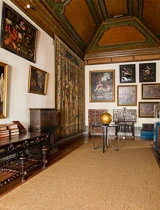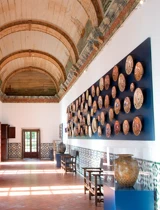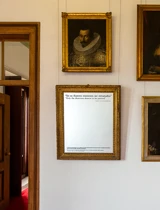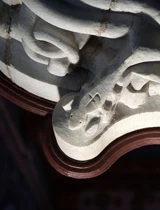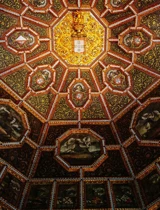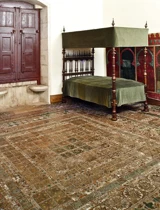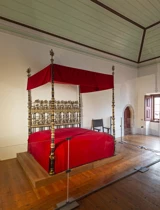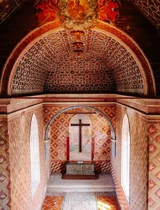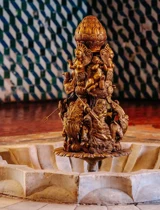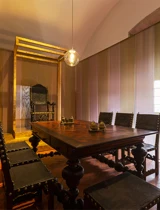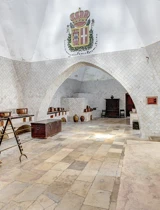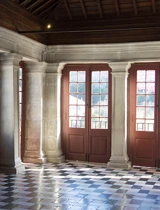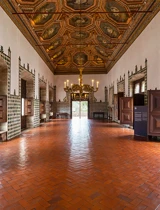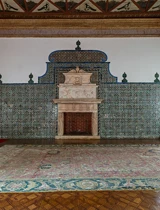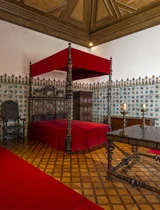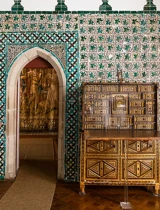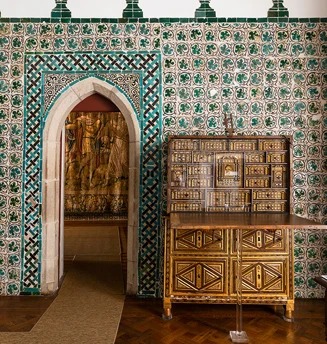
Wardrobe
Wardrobe
The fourth room in the palace of King João I and Queen Philippa of Lancaster was also called the Mermaids Room due to the decoration on the ceiling.
This is where the king and queen’s important belongings were kept: clothes, jewellery, silver and other ceremonial items.
These objects were normally stored in chests.
Discover the objects on display in this room.
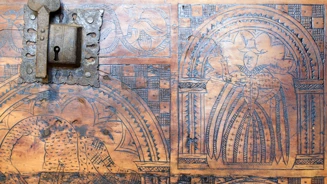
Chest
-
Portugal (?), 16th-17th century
-
Juniper and metal
- Inv. No. PNS6027
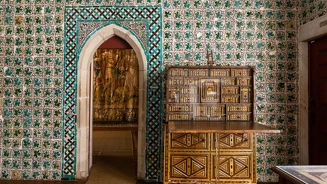
Cabinet
- Spain, 16th-17th century
- Walnut, velvet, ivory and iron
- Inv. No. PNS3092
This fall-front cabinet is common in design to furniture of this kind produced in Spain during the 17th century, above all in the Salamanca region. In this period, fall-front cabinets were among the most lavish pieces of furniture in a house. They were used to store jewellery, money and other valuable objects, but also documents attesting to an individual’s social status, such as deeds, rents or wills.
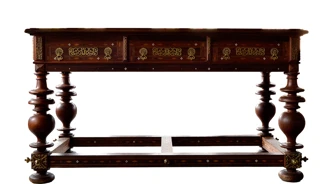
Table
- Portugal (or Italy?), 18th century
- Wood (rosewood and ebony), marble, ivory and brass
- Inv. No. PNS2960
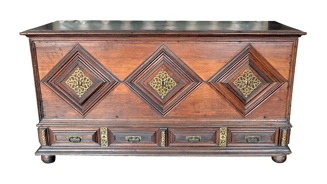
Chest
- Portugal, 17th century
- Wood (sucupira) and gilded metal
- Inv. No. PNS3100
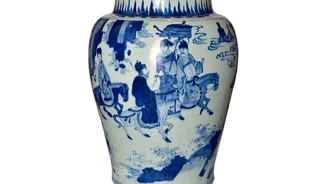
Pot
- China
- Qing Dynasty - Kangxi reign (1662-1722)
- Porcelain
- Inv. No. PNS101
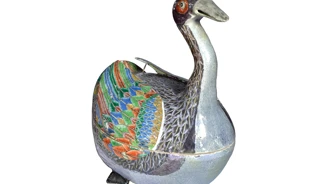
Tureen
- China
- Qing Dynasty - Qianlong reign (1760-1770)
- Porcelain
- Inv. No. PNS59
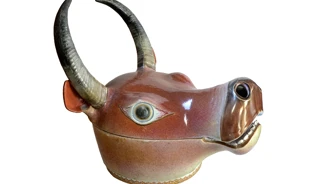
Tureen
- China
- Qing Dynasty - Qianlong reign (1760-1770)
- Porcelain
- Inv. No. PNS53
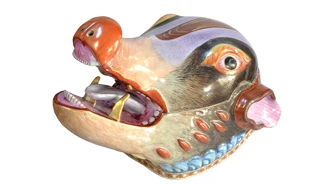
Tureen
- China
- Qing Dynasty - Qianlong reign (1760-1770)
- Porcelain
- Inv. No. PNS63
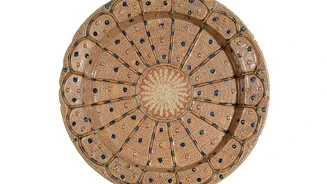
Dish
- Manises (Valencia), Spain, c.1450-1470
- Lustreware
- Inv. No. PNS70
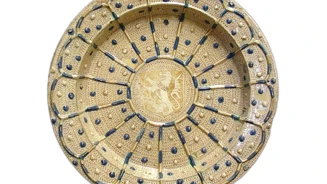
Dish
- Manises (Valencia), Spain, c.1470-1515
- Lustreware
- Inv. No. PNS71
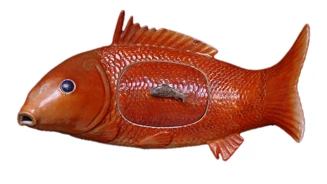
Tureen
- China
- Qing Dynasty - Qianlong reign (1736-1795)
- Porcelain
- Inv. No. PNS64
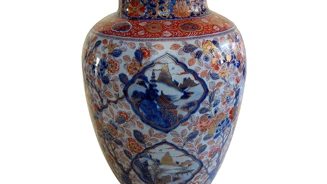
Pot
- China
- Qing Dynasty - Qianlong reign (1736-1795)
- Porcelain
- Inv. No. PNS42
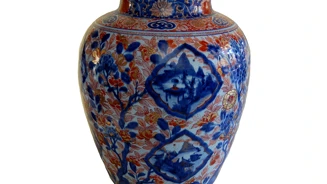
Pot
- China
- Qing Dynasty - Qianlong reign (1736-1795)
- Porcelain
- Inv. No. PNS44
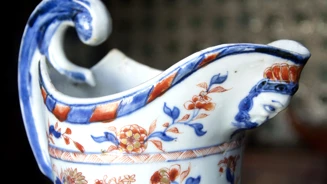
Ewer
- China, Qing Dynasty - Qianlong reign (1736-1795)
- Porcelain
- Inv. No. PNS95
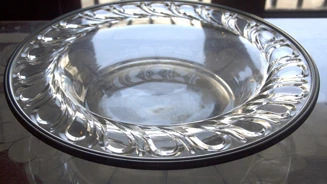
Dish
- 18th century
- Glass and metal
- Inv. No. PNS5593
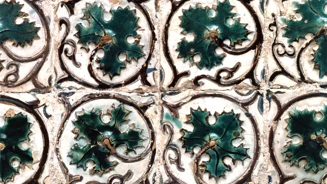
Tiles
The relief tiles, with vine and tendril motifs, date from the 16th century. At the top of the tile composition on all the walls we can see green vases in cut tiles, probably installed in the 18th century.


